One student completely froze, scissors at the edge of her paper and panic in her eyes. I walked over, ripped her paper in half, and said,
“There. Now you can’t mess it up.”
She blinked. Then she laughed. Then her scissors started cutting.
Wild Beasts 🐗
Grade 7 Art with Linda. She’s been letting me co-design some of her art blocks. She focuses on structure and skill development, I bring the chaos and playful experimentation. It’s been a good balance.
This week we explored shape through Henri Matisse. I gave a mini-lesson on his evolution—from classical painting to Fauvism (“wild beasts,” baby), to the cut-paper collages he made later in life, post-surgery.
His quote, “painting with scissors,” became the backbone of the lesson.

We started with a slide deck. They liked it, but it didn’t land the way I wanted. I talked too much, and maybe lost a bit of their initial interest. They were curious, but not hooked.
Favourite Places 🎇
We kicked off the making with a warm-up: sketch your favourite place. Any place in the world. A vacation, a room, a favourite tree.
Answers included ice rinks, beaches, bedrooms, volleyball courts, Subway (yes, the sandwich shop). Next, students broke the scene into component shapes. Pools became rectangles, tents became triangles and beds became fluffy clouds set on elongated h’s. Channeling Matisse, they cut those shapes out of coloured paper, and reconstructed the scene by layering and collaging.


A favourite place and the shapes hidden in the sketch.
At first: hesitation. Blank stares. “Is this right?” But after the ripped-paper moment, things loosened. There is no “right.”
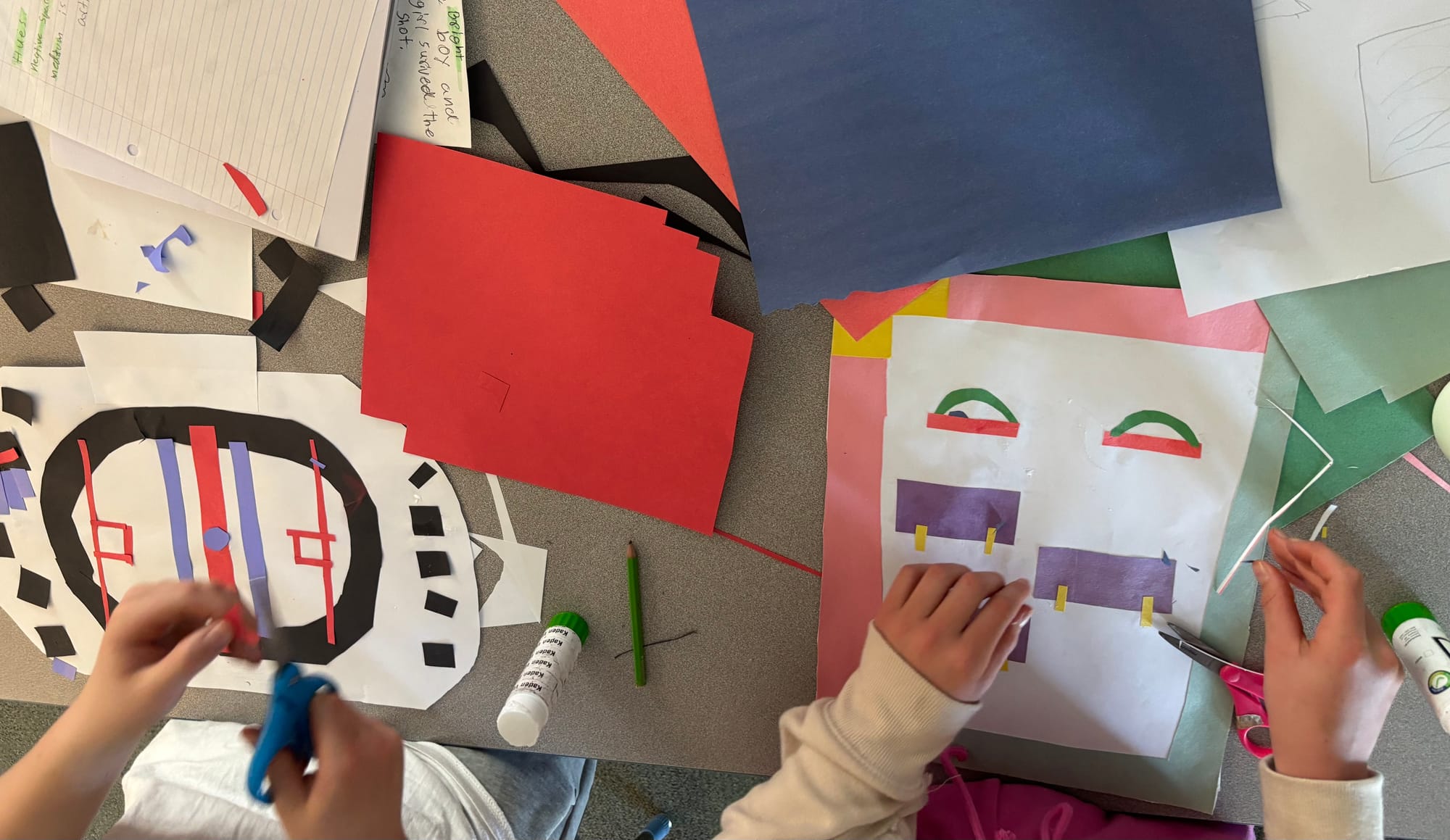
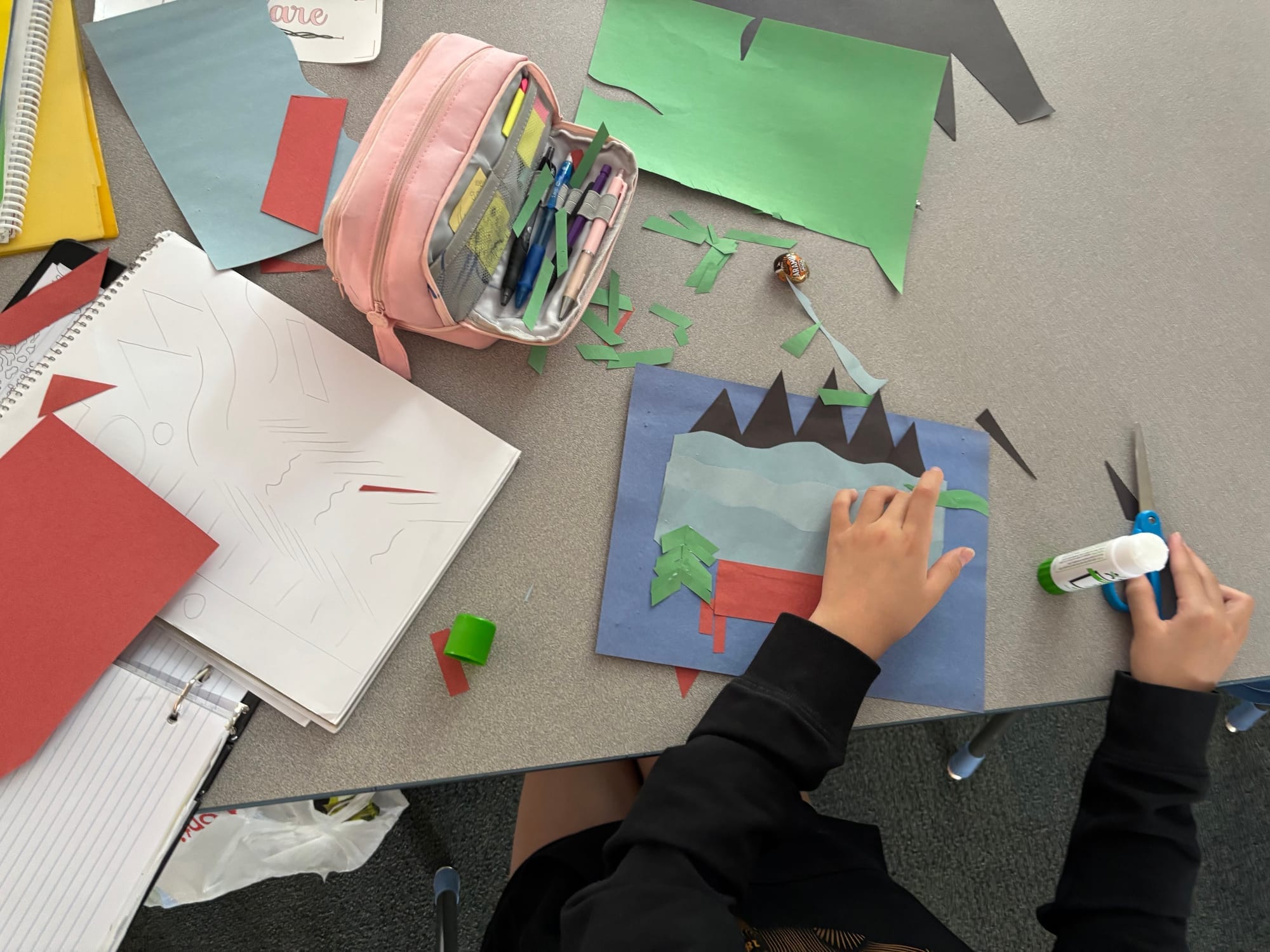
That’s when their compositions sprang to life—when boundaries started to get pushed.
One student added jagged triangles for shouting fans.
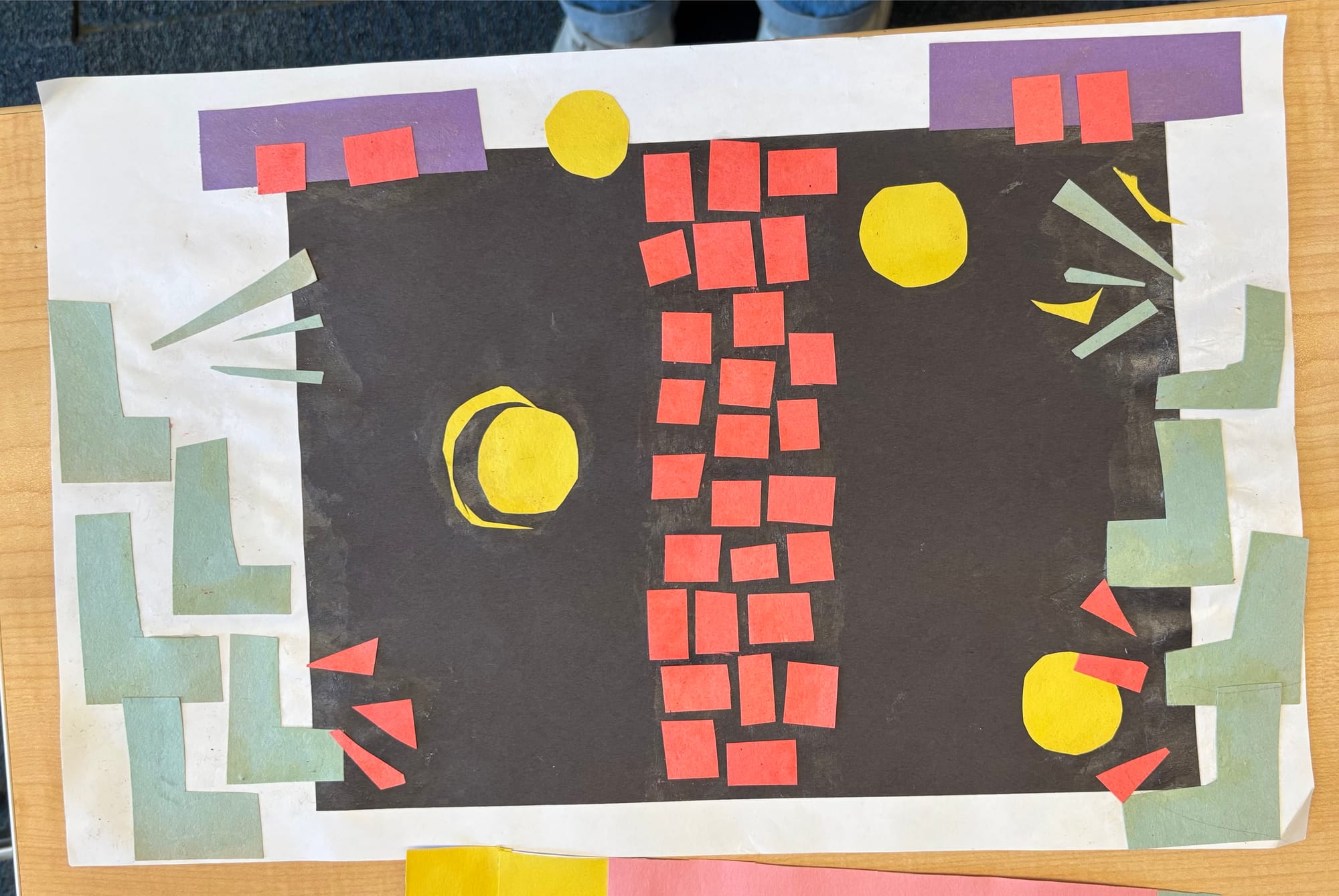
Another created an outfield made of off-cuts.
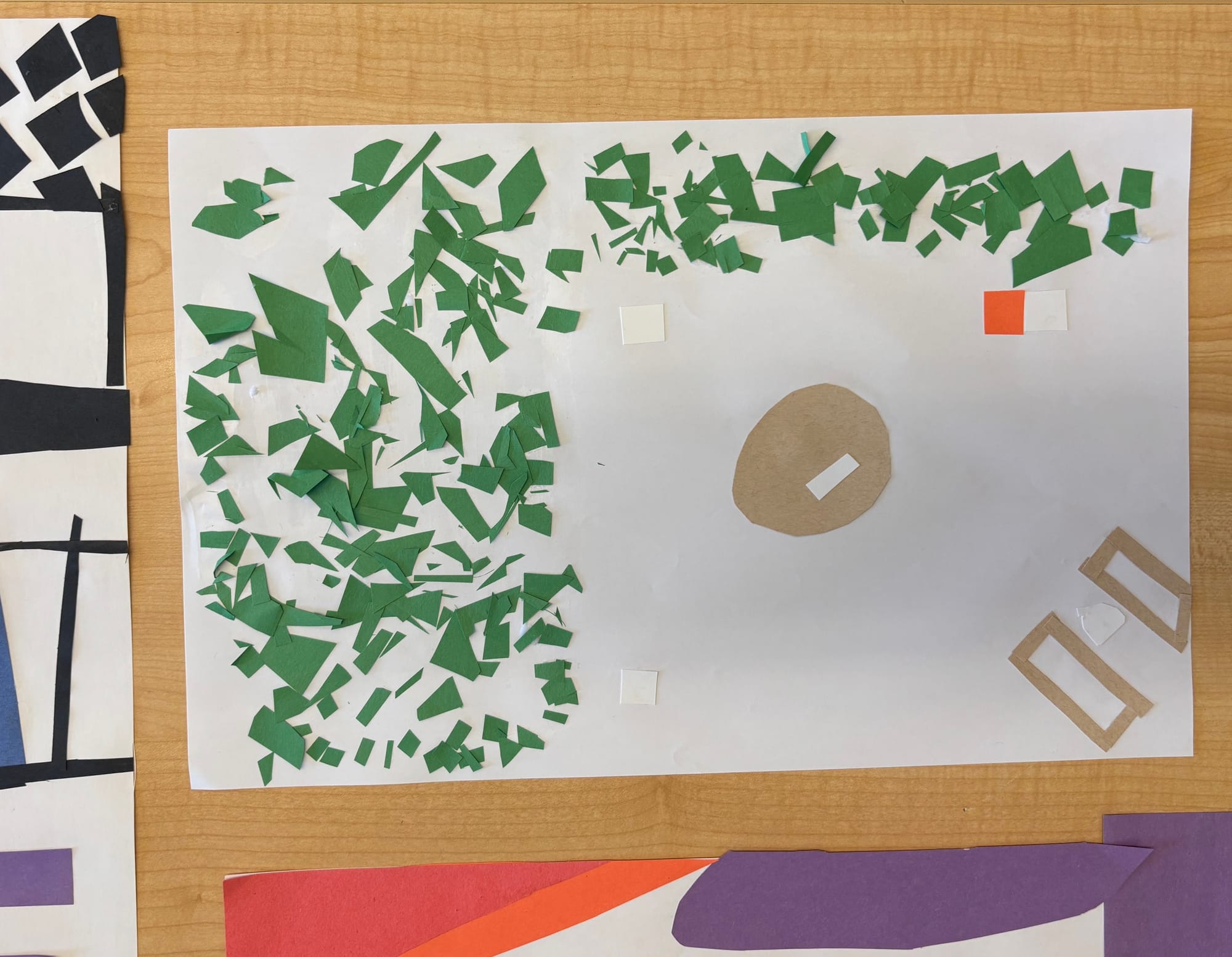
Beds turned into clouds and dreams into abstract shapes.
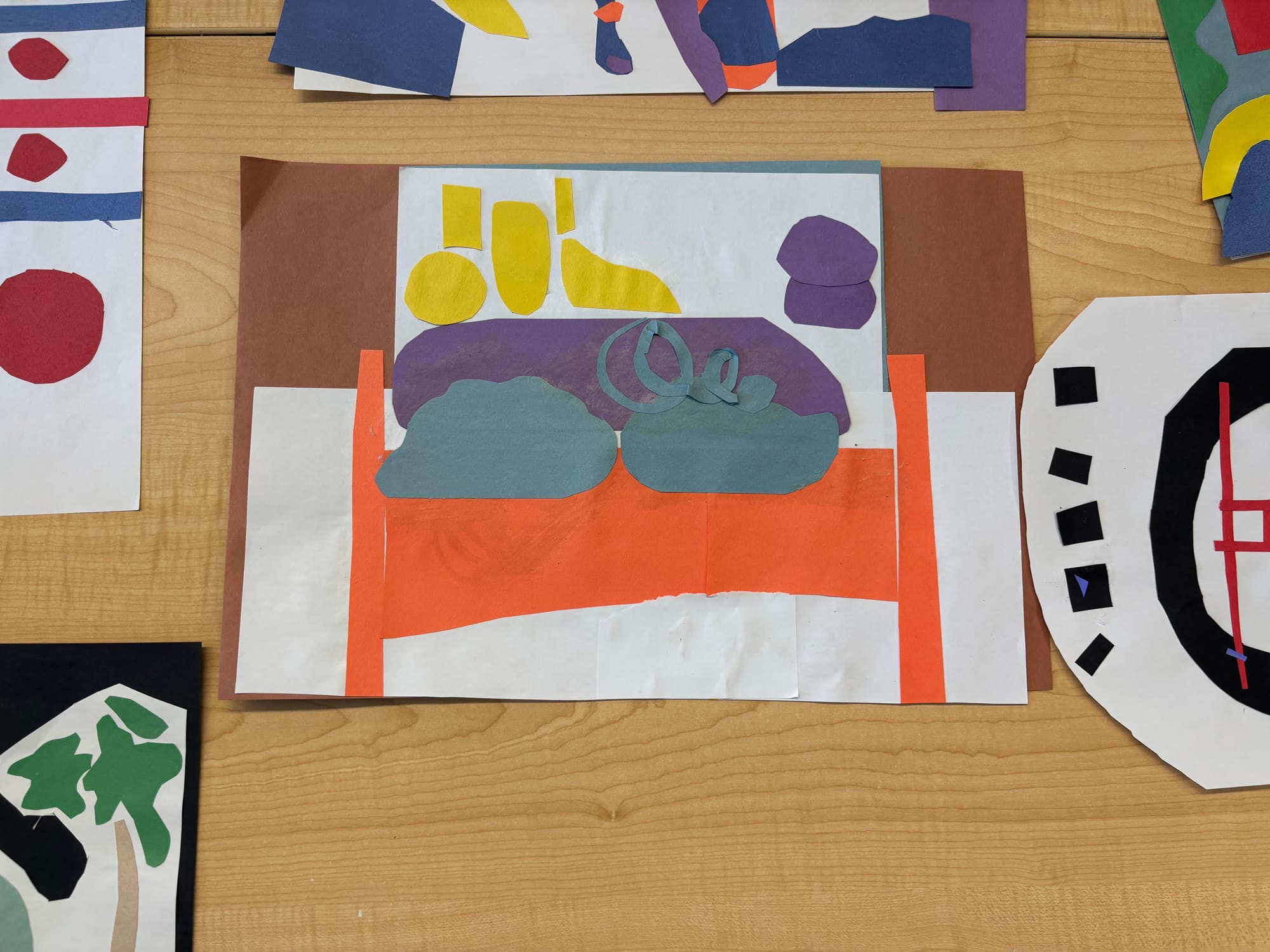
Another student was deep into a poolside hotel scene when she noticed her scrap pile looked… like a skyline. She gathered the bits, glued them together into an abstract cityscape. Two art pieces for the price of one!
“This one’s way better,” she said.
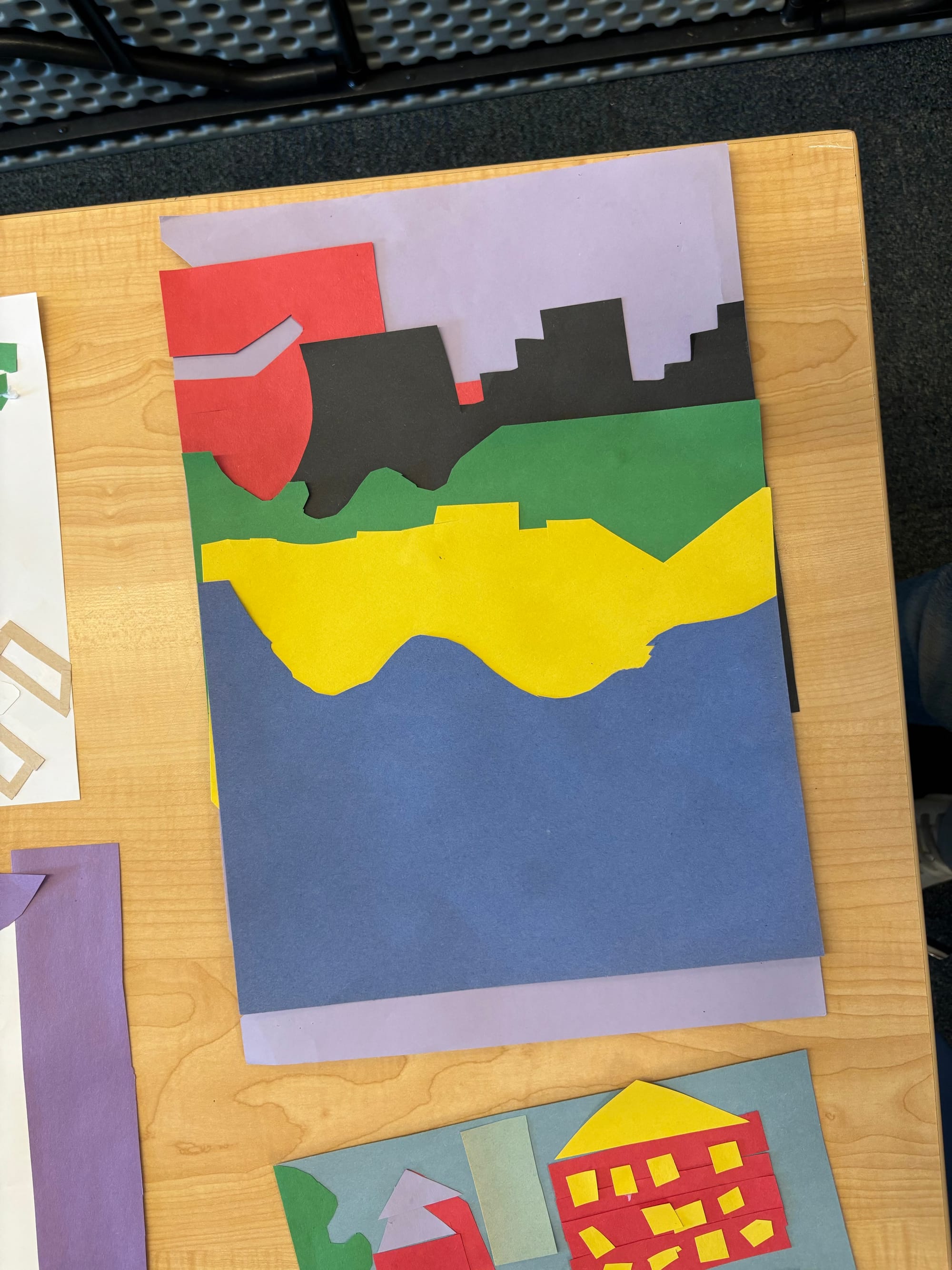
And then came the camper.
She had built a perfect camping scene—tent, trees, fire—cut and placed with care. But something felt off. We went back and forth a bit to figure out why.
“It’s nighttime, right?”
“Yeah.”
“Then where’s the dark?”
She cut out the entire scene and glued the whole thing on black paper. Suddenly, the white outlines around her shapes became glow—firelight in the woods. It was beautiful, clever and unexpected.
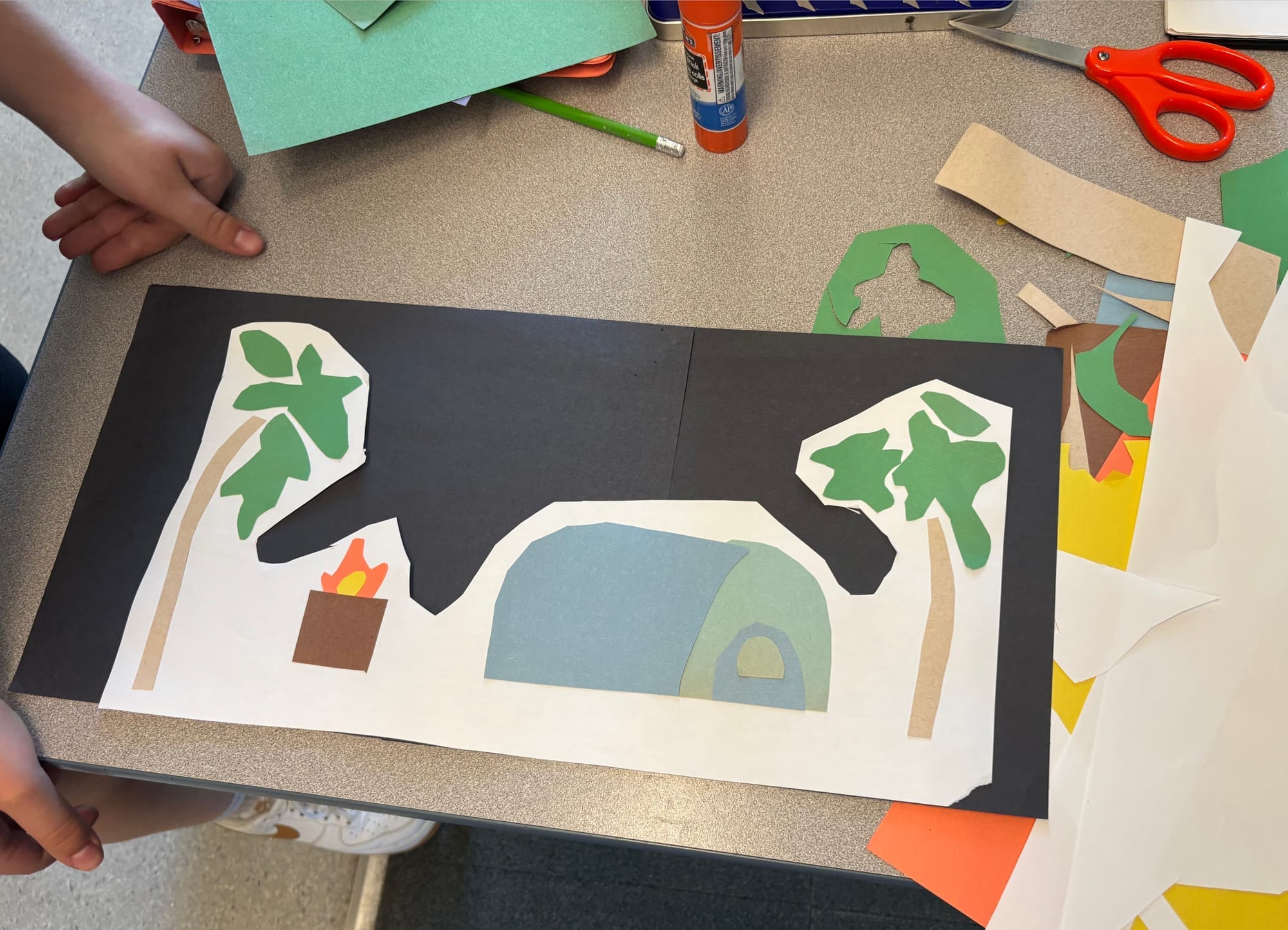
Reflection 🪩
This wasn’t a lesson about scissors, collages or even painting! It was about letting go of perfection. About recognizing that the wrong shapes might hold better ideas than the plan. That art is discovery, not just execution.
I wish I’d done more to spark that early. The slide deck had some intrigue, but I was leading with context instead of curiosity. Next time, I want to flip it—let them make first, then show them Matisse after, as a “look what you were already doing.”
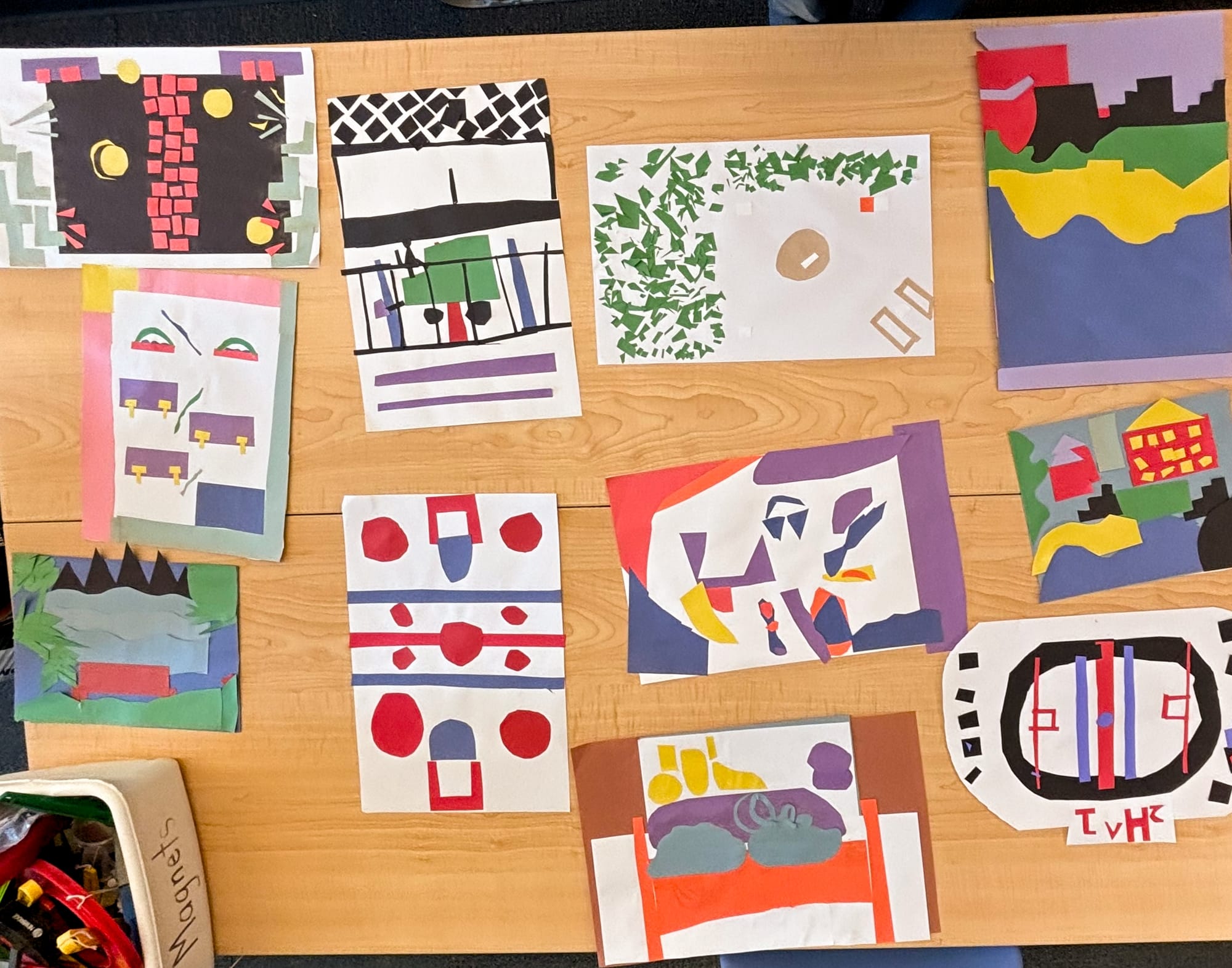
We debriefed after class and started planning next week’s focus: texture. Linda also mentioned she was stacking art blocks all day. Later, I caught a guest lecture from a parent who teaches art history. He said this line, and it’s been stuck in my brain since:
“We’ve been trying to say things with pictures for over 40,000 years. With words? Only 7,000.”
Reverse Colouring Books

A few weeks back we gathered as a team. Carlo brought us Reverse Colouring Books to draw in and as we chatted, we doodled. I was absolutely hooked—outlining abstract shapes and finding scenes in the watercolour splotches was a meditative experience.

